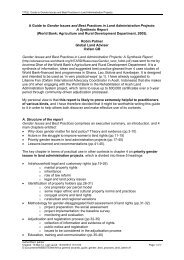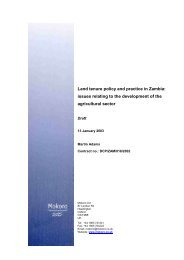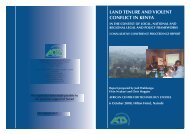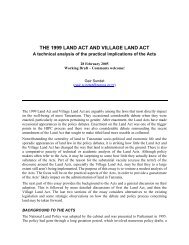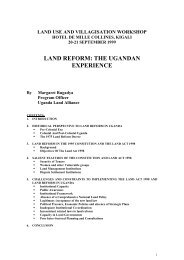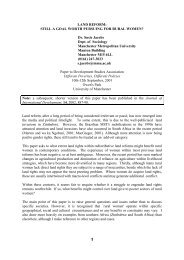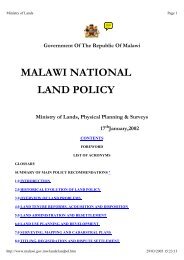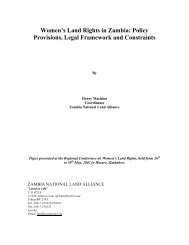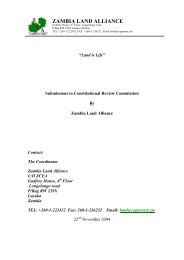Download - Mokoro
Download - Mokoro
Download - Mokoro
- No tags were found...
You also want an ePaper? Increase the reach of your titles
YUMPU automatically turns print PDFs into web optimized ePapers that Google loves.
32Between 1994/95 and 2002/03 there was a 10% decline in the area farmed (DOA 2006).While there is no national data on the degree of non-utilisation or under-utilisation ofcommercial farmland in South Africa, it does appear that arable land in particular isunder-utilised, mostly due to being used for grazing rather than cultivation. Althoughnationally, 91% of arable land is considered to be fully utilised, this figure variessubstantially by province: 46% of potentially arable land in Limpopo and 52% in theNorthern Cape is reported to be unused (NDA 2006:5). Further, the past decade hasseen the contraction of farming as more land is taken out of agricultural productionaltogether, to make way for non-agricultural land uses, through conversion to gamefarms (a trend noted in most provinces of the country), golf courses (specifically on theSouthern Cape coast and KwaZulu-Natal coast), and, in similar areas, for housing andholiday estates.Within this broad picture, sectoral changes are significant. In the field crop sector, realgross income increased by 66% between 1993 and 2002 (NDA 2005) and is expected tocontinue its rise in output and area planted, including sugar cane, sunflower and soya(not least due to the growing demand for crops for biofuel production). At the same time,the areas planted to maize and wheat declined by 31% and 24%, respectively, between1993/4 and 2004/5 – yet South Africa typically has a surplus of maize at a national level,with production exceeding domestic consumption by people and animals by about 50%.Other sectors in decline in terms of area planted are grain sorghum, groundnuts, rye,cotton and tobacco.In the horticultural sector, gross income increased by 53% in real terms between 1993and 2002. Key shifts here have been the rising output and higher increases in the valueof production in apples, apricots, grapes, pears, peaches, plums, figs, strawberries, overthe past ten years. Within the sector, a major shift has been from other fruit to winegrapes, and growth in value-adding on-farm in the form of wine cellars.In the livestock sector, gross income rose only slightly by 10% between 1993 and 2002(NDA 2005:8). Cattle numbers rose by 10% between 1994 and 2004 in the commercialareas where slaughtering also increased, and the unknown cattle numbers in communalareas is also understood to be growing substantially (Andrew et al 2003). Despiteincreased production, South Africa imports nearly 10% of the beef we consume.Similarly, the poultry industry (both meat and eggs) is growing, but SA has rapidlybecome a net importer of white meat as consumption grew 71% in the 10 years since1994. Sheep and goats, though, are in gradual decline, as are wool products – thoughthe proportion of this produced by black farmers is growing. This does not reflect,however, the substantial and growing production, slaughter and sale of sheep and goatsin the informal market, none of which is captured in national agricultural data.Credit and debtCheap credit led to heavy borrowing and “over-mechanisation” in the 1970s and 1980s,at times resulting in negative real interest rates (ie. it was actually profitable for farmersto be in debt). By 1997, the Agricultural Credit Board, which had bailed out bankruptwhite farmers, was disbanded. In 2002, farmers paid nearly R3 billion in interestpayments from the agricultural sector to debtors, for a total farming debt ofapproximately R30 billion, which rose to R36.7 billion by 2006. Commercial banks havePolicy Options for Land and Agrarian ReformProgramme for Land and Agrarian Studies, University of the Western Cape




